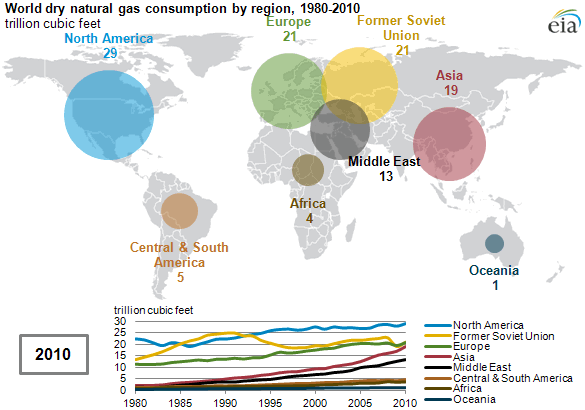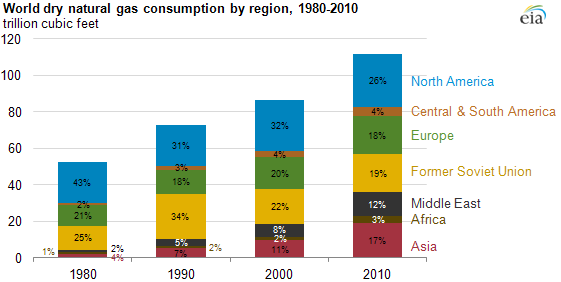
Global natural gas consumption doubled from 1980 to 2010

Between 1980 and 2010, global consumption of dry natural gas rose from 53 trillion cubic feet (Tcf) to 113 Tcf. Although consumption in North America saw the slowest regional growth in percentage terms (29%) from 1980 to 2010, the region accounted for more than 25% of the world's natural gas consumption during all years in the period. The Middle East had the highest growth rate, increasing more than ten-fold from 1.3 Tcf in 1980 to 13.2 Tcf in 2010.
Unlike petroleum, trends in regional natural gas consumption and production are more similar because of the limited role played by inter-continental movements of natural gas, at least until recently. For example, global LNG shipments rose from 6.7 Tcf to 10.5 Tcf between 2005 and 2010, or 58%, according to BP's Statistical Review of World Energy (2011 report). Between 2009 and 2010, global LNG shipments were up 23%.
Asia had the second-highest growth rate, increasing more than eight-fold from 2.2 Tcf to 19.2 Tcf over the three decades. By 2010, Asian natural gas demand approached the level of Europe and the Former Soviet Union.

Note: Percents on graph represent that region's share of global dry natural gas consumption in that year. Percents do not sum to 100% for each year because the graph does not include Oceania, which only accounted for 1% of global consumption each year.
Download CSV Data
Future growth in each region will depend on economic growth rates, natural gas production trends, differences in natural gas prices across regions, and future energy and environmental policies.